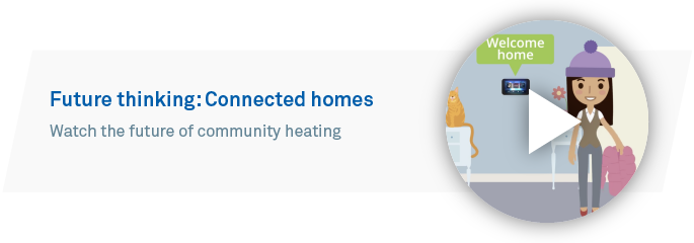Community heating schemes can bring a variety of benefits to residents but only when they are fully informed about the system; how to use it, and get the most out of it. Here are our top tips to successfully engaging with the resident after installing a new heating scheme.

As heat networks continue to develop and increase in popularity, the industry is consolidating best practices to improve existing and future schemes. In recent months, this has led to a focus on customer service and satisfaction and placing residents at the heart of heating strategies. The following tips can help landlords with resident engagement which from experience we know improves satisfaction levels.
Tip #1 Be proactive and offer a flexible communication system
Community heating customers cover a wide demographic, with a similarly wide range of preferred communication channels. Catering to their preferred method can involve anything from social media and live chat for the technology savvy, to letters and phone calls to take the more traditional approach. Offering a flexible communications method improves the discussion you can hold with residents but also increases the level of service you can provide.
Tip #2 Keep the resident informed from day one
It is important for residents to be fully aware that the property they are renting or buying is part of a community heating scheme at the earliest opportunity. One option is to provide materials explaining what their future heating system entails or a welcome pack once a scheme is live or upgraded. However, it is key to point out that some individuals will only glance at written material, requiring more effort on the heat provider to communicate effectively.
Tip #3 Read up on best practice
For vendors and landlords who are unsure on how to take their customer service to the next level, the CIBSE Code of Practice outlines how both parties can start singing from the same hymn sheet. This begins with strong coordination between organisations and departments throughout the supply chain - giving a ‘joined-up approach’ that residents can interact with and be assured that the same level of service will be abided by. This coordination also needs to extend to systems used, improving communications and a holding a keen focus on providing a holistic service.
Tip #4 Deliver a reliable service
When it comes to the resident making contact with your customer services team, make sure that the level of service that is expected is delivered.When a customer calls it is usually related to an issue which could be with heat supply or pressure from payment demands, therefore lengthy time on hold or an unhelpful call handler will only add to this pressure and could undermine previous communications efforts.
Tip #5 Give advice about their systems
Once their heating system is ready to be used, talk them through how to use it on a one-to-one basis. This will help rectify any issues and answer any questions they may have regarding the heating system and/or their new billing services.
Key takeaways
- Offer a proactive service with flexible communication systems, remember communication technology has advanced, therefore we should adapt to it
- Make sure that the resident is informed about their heating system and the differences to regular utilities from day one.
- Benchmark against industry best practices to ensure a high level of service is provided
- Offer a reliable service in terms of heat and customer facing services
- Give advice on a one-to-one basis with the resident, talk them through how to get the most out of their heating system



